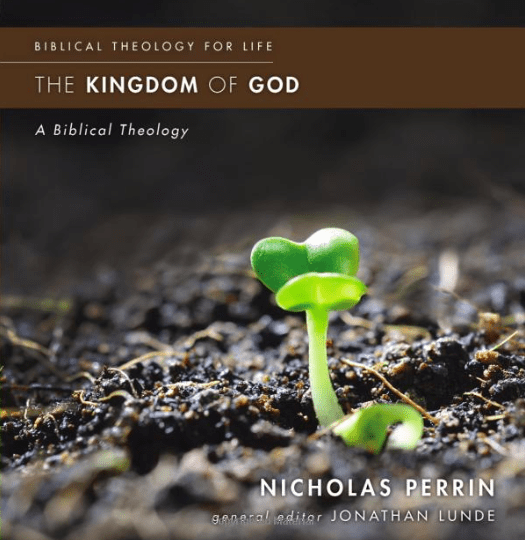David Kinnaman, at Barna, has a new study on the so-called New Calvinists or NeoReformed movement, a term I may well have invented to describe what I perceive to be the rise of Calvinists. David says Nope, not happening. This is no movement. Not even among Southern Baptists? Nope. David told me the numbers are 30% now and they were 30% ten years ago.
 What say you? Also this: Why have we seen major media cover New Calvinism if there is no such a thing? Many of us are thinking there is a movement: Is this just an increase in the presence of their voice? Are these folks getting more media attention with little change in numbers? I do know this: a high percentage of the top church web sites are connected to this New Calvinism (if there is such a thing).
What say you? Also this: Why have we seen major media cover New Calvinism if there is no such a thing? Many of us are thinking there is a movement: Is this just an increase in the presence of their voice? Are these folks getting more media attention with little change in numbers? I do know this: a high percentage of the top church web sites are connected to this New Calvinism (if there is such a thing).
Clergy Identity
For the past decade the Barna Group has been tracking the percentage of Protestant pastors who identify their church as “Calvinist or Reformed.” Currently, about three out of every 10 Protestant leaders say this phrase accurately describes their church (31%). This proportion is statistically unchanged from a decade ago (32%). In fact, an examination of a series of studies among active clergy during the past decade indicates that the proportion that embraces the Reformed label has remained flat over the last 10 years.Pastors who embrace the term “Wesleyan or Arminian” currently account for 32% of the Protestant church landscape – the same as those who claim to be Reformed. The proportion of Wesleyan/Arminian pastors is down slightly from 37% in 2000. There has been less consistency related to this label during the past decade, with the tracking figures ranging from a low of 26% to a high of 37%.
The director of the study, David Kinnaman, clarified that respondents were not given definitions of these terms. As dictated by standard practice in survey research, identification with these terms was left up to each pastor’s interpretation.
Who is Reformed?
The Barna study explored some characteristics of the pastors aligned with the “Calvinist or Reformed” label as compared to the profile of pastors who identified themselves as “Wesleyan or Arminian.” In terms of the age of pastors, among the youngest generation of pastors (ages 27 to 45), 29% described themselves as Reformed, while 34% identified as Wesleyan. Pastors associated with the Boomer generation (ages 46 to 64) were evenly split between the two theological camps: 34% Reformed, 33% Arminian. Pastors who were 65 or older were the least likely to use either term: 26% and 27%, respectively.Regionally, Reformed churches were most common in the Northeast, while least common in the Midwest. Wesleyan/Arminian congregations were equally likely to appear in each of the four regions.
Denominational background made a significant difference, but the dividing lines were not always straightforward: 47% of mainline churches were described by their pastor as Wesleyan/Arminian, while 29% of mainline congregations adopted the Reformed categorization. (Mainline churches include American Baptist Churches, Evangelical Lutheran Churches in America, the Episcopal Church, the United Methodist Church, Presbyterian Church USA, and United Church of Christ.) In contrast, non-mainline churches were more likely to self-describe as Reformed (35%), although 30% of the non-mainline pastors identified as Wesleyan/Arminian.
The study found that 31% of pastors who lead churches within traditionally charismatic or Pentecostal denominations were described as Reformed, while 27% identified as Wesleyan/Arminian. This is somewhat surprising given that these denominations – including Assembly of God, Vineyard, Foursquare, and Church of God-Cleveland – are generally viewed as stemming from Wesleyan or Holiness traditions.
Despite the common public view of Reformed churches being doctrinally conservative, a greater proportion of these leaders described themselves as “theologically liberal” than was true among Wesleyan/Arminian leaders (17% versus 13%).
Completion of seminary was statistically equivalent whether Arminian/Wesleyan (65%) or Reformed/Calvinist (62%).
Research Observations
Kinnaman, who serves as Barna Group president, concluded, “there is no discernible evidence from this research that there is a Reformed shift among U.S. congregation leaders over the last decade. Whatever momentum surrounds Reformed churches and the related leaders, events and associations has not gone much outside traditional boundaries or affected the allegiances of most today’s church leaders. It is important to note that the influence of Reformed churches might also be measured through other metrics that are currently unavailable, such as the theological certainty of self-described adherents, their level of acceptance toward those who are not Calvinist, and the new methods Reformed leaders are using to market their views to their peers and to the public.“Nevertheless, the research shows that many pastors do not necessarily conform to traditional doctrinal perspectives when it comes to how they think about or operate in their ministries. In other words, most of the nation’s 300,000 Protestant churches are in a state of theological flux, apparently open to identities and trends that do not necessarily fall within expected denominational or doctrinal boundaries. Given this profile, we expect that new theological, relational, as well as methodological networks that emerge will redefine the Protestant landscape over the next decade.”











